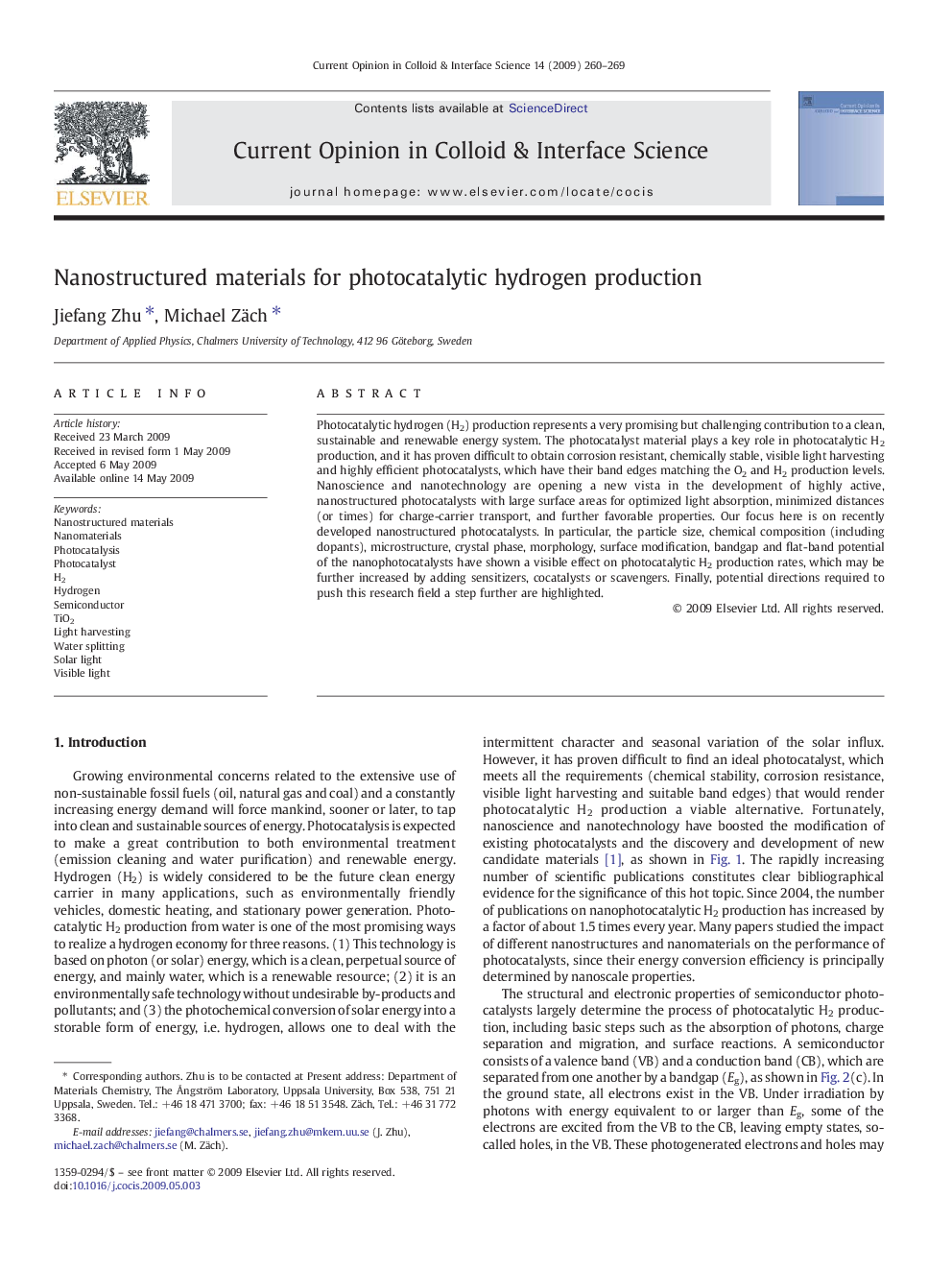| Article ID | Journal | Published Year | Pages | File Type |
|---|---|---|---|---|
| 603246 | Current Opinion in Colloid & Interface Science | 2009 | 10 Pages |
Photocatalytic hydrogen (H2) production represents a very promising but challenging contribution to a clean, sustainable and renewable energy system. The photocatalyst material plays a key role in photocatalytic H2 production, and it has proven difficult to obtain corrosion resistant, chemically stable, visible light harvesting and highly efficient photocatalysts, which have their band edges matching the O2 and H2 production levels. Nanoscience and nanotechnology are opening a new vista in the development of highly active, nanostructured photocatalysts with large surface areas for optimized light absorption, minimized distances (or times) for charge-carrier transport, and further favorable properties. Our focus here is on recently developed nanostructured photocatalysts. In particular, the particle size, chemical composition (including dopants), microstructure, crystal phase, morphology, surface modification, bandgap and flat-band potential of the nanophotocatalysts have shown a visible effect on photocatalytic H2 production rates, which may be further increased by adding sensitizers, cocatalysts or scavengers. Finally, potential directions required to push this research field a step further are highlighted.
